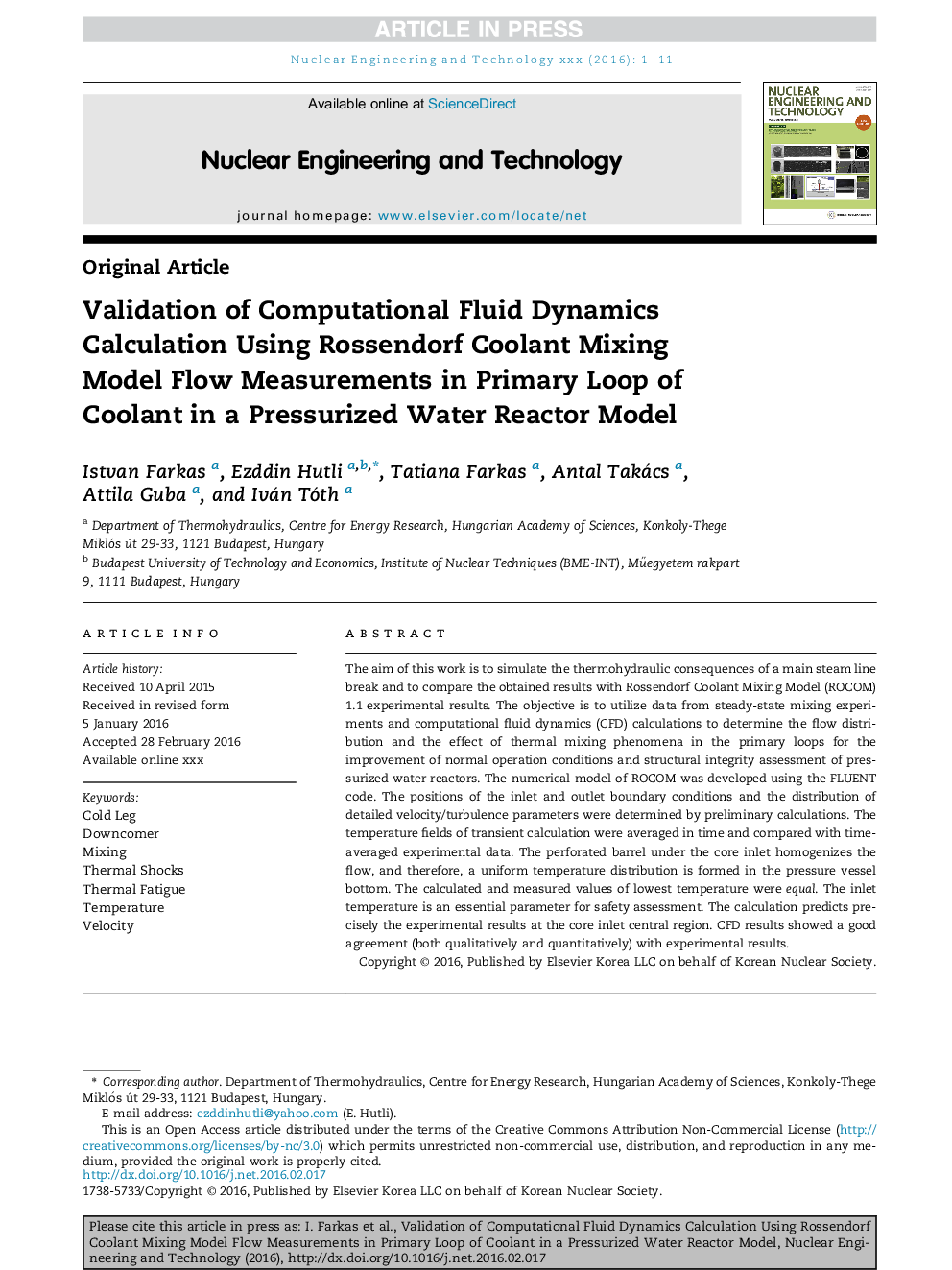| Article ID | Journal | Published Year | Pages | File Type |
|---|---|---|---|---|
| 1739835 | Nuclear Engineering and Technology | 2016 | 11 Pages |
Abstract
The aim of this work is to simulate the thermohydraulic consequences of a main steam line break and to compare the obtained results with Rossendorf Coolant Mixing Model (ROCOM) 1.1 experimental results. The objective is to utilize data from steady-state mixing experiments and computational fluid dynamics (CFD) calculations to determine the flow distribution and the effect of thermal mixing phenomena in the primary loops for the improvement of normal operation conditions and structural integrity assessment of pressurized water reactors. The numerical model of ROCOM was developed using the FLUENT code. The positions of the inlet and outlet boundary conditions and the distribution of detailed velocity/turbulence parameters were determined by preliminary calculations. The temperature fields of transient calculation were averaged in time and compared with time-averaged experimental data. The perforated barrel under the core inlet homogenizes the flow, and therefore, a uniform temperature distribution is formed in the pressure vessel bottom. The calculated and measured values of lowest temperature were equal. The inlet temperature is an essential parameter for safety assessment. The calculation predicts precisely the experimental results at the core inlet central region. CFD results showed a good agreement (both qualitatively and quantitatively) with experimental results.
Related Topics
Physical Sciences and Engineering
Energy
Nuclear Energy and Engineering
Authors
Istvan Farkas, Ezddin Hutli, Tatiana Farkas, Antal Takács, Attila Guba, Iván Tóth,
